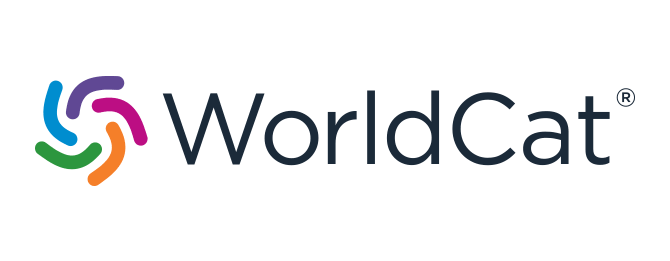http://worldcat.org/entity/work/id/9589675
Introduction to constraint databases
This textbook provides students with a course in the theory of databases. It is different from others in that the author presents the subject in the framework of constraint databases which provide a natural and powerful generalization of relational databases. An important theme running through the text is to show how relational databases can smoothly develop into constraint databses and so relational database users can easily become constraint database users. Switching to constraint databases requires sacrificing none of the benefits of relational databses whilst new advantages may be realised. Peter Revesz begins by discussing data models and how queries may be addressed to these models. From this, he develops the theory of relational and constraint databases including Datalog and the relational calculus. The book then discusses three sample constraint database systems, DISCO, DINGO, and RATHER. Advanced undergraduate students and graduate students in computer science will find this a clear introduction to the subject. Professionals and researchers will appreciate this novel perspective on their subject.
Open All Close All
http://schema.org/about
- http://experiment.worldcat.org/entity/work/data/9589675#Topic/datenbanksystem
- http://experiment.worldcat.org/entity/work/data/9589675#Topic/base_de_donnees_contrainte_intelligence_artificielle_logiciel_developpement_manuel
- http://experiment.worldcat.org/entity/work/data/9589675#Topic/bases_de_dades_concurrents
- http://experiment.worldcat.org/entity/work/data/9589675#Topic/databasesystemer
- http://experiment.worldcat.org/entity/work/data/9589675#Topic/abfrage
- http://experiment.worldcat.org/entity/work/data/9589675#Topic/softwareentwicklung
- http://experiment.worldcat.org/entity/work/data/9589675#Topic/datenbanksystem_constraint_<_kunstliche_intelligenz>
- http://experiment.worldcat.org/entity/work/data/9589675#Topic/datenbank
- http://experiment.worldcat.org/entity/work/data/9589675#Topic/bases_de_donnees
- http://id.worldcat.org/fast/1093575
- http://experiment.worldcat.org/entity/work/data/9589675#Topic/bases_de_dades
- http://experiment.worldcat.org/entity/work/data/9589675#Topic/bases_de_dades_restrictives
- http://id.loc.gov/authorities/subjects/sh00000129
- http://experiment.worldcat.org/entity/work/data/9589675#Topic/base_de_donnees_programmation_par_contraintes_manuel
- http://experiment.worldcat.org/entity/work/data/9589675#Topic/computer_science
- http://experiment.worldcat.org/entity/work/data/9589675#Topic/constraint_<_kunstliche_intelligenz>
- http://id.worldcat.org/fast/875872
- http://experiment.worldcat.org/entity/work/data/9589675#Topic/bases_de_dades_gestio
- http://experiment.worldcat.org/entity/work/data/9589675#Topic/informatiesystemen
- http://id.loc.gov/authorities/subjects/sh86007768
- http://experiment.worldcat.org/entity/work/data/9589675#Topic/databanken
- http://experiment.worldcat.org/entity/work/data/9589675#Topic/bases_de_donnees_de_contraintes
- http://experiment.worldcat.org/entity/work/data/9589675#Topic/computers_data_processing
- http://experiment.worldcat.org/entity/work/data/9589675#Topic/gestio_de_bases_de_dades
- http://experiment.worldcat.org/entity/work/data/9589675#Topic/constraints_taalkunde
- http://experiment.worldcat.org/entity/work/data/9589675#Topic/bases_de_datos_relacionales
- http://experiment.worldcat.org/entity/work/data/9589675#Topic/systeemontwerp
- http://experiment.worldcat.org/entity/work/data/9589675#Topic/datenbanksystem_constraint_<_kunstliche_intelligenz>_abfrage
- http://experiment.worldcat.org/entity/work/data/9589675#Topic/base_de_donnees_de_contraintes
http://schema.org/description
- "This textbook provides students with a course in the theory of databases. It is different from others in that the author presents the subject in the framework of constraint databases which provide a natural and powerful generalization of relational databases. An important theme running through the text is to show how relational databases can smoothly develop into constraint databses and so relational database users can easily become constraint database users. Switching to constraint databases requires sacrificing none of the benefits of relational databses whilst new advantages may be realised. Peter Revesz begins by discussing data models and how queries may be addressed to these models. From this, he develops the theory of relational and constraint databases including Datalog and the relational calculus. The book then discusses three sample constraint database systems, DISCO, DINGO, and RATHER. Advanced undergraduate students and graduate students in computer science will find this a clear introduction to the subject. Professionals and researchers will appreciate this novel perspective on their subject."@en
- "This textbook provides students with a course in the theory of databases. It is different from others in that the author presents the subject in the framework of constraint databases which provide a natural and powerful generalization of relational databases. An important theme running through the text is to show how relational databases can smoothly develop into constraint databses and so relational database users can easily become constraint database users. Switching to constraint databases requires sacrificing none of the benefits of relational databses whilst new advantages may be realised. Peter Revesz begins by discussing data models and how queries may be addressed to these models. From this, he develops the theory of relational and constraint databases including Datalog and the relational calculus. The book then discusses three sample constraint database systems, DISCO, DINGO, and RATHER. Advanced undergraduate students and graduate students in computer science will find this a clear introduction to the subject. Professionals and researchers will appreciate this novel perspective on their subject."
http://schema.org/name
- "Introduction to constraint databases"@en
- "Introduction to constraint databases"
- "Introduction to constraint databases with 112 illustrations"@en
- "Introduction to constraint databases with 112 illustrations"
- "Introduction to constraint database"
- "Introduction to constraint databases : with 112 illustrations"
- "Introduction to Constraint Databases"
http://schema.org/workExample
- http://www.worldcat.org/oclc/818992895
- http://www.worldcat.org/oclc/289017099
- http://www.worldcat.org/oclc/902264434
- http://www.worldcat.org/oclc/638842154
- http://www.worldcat.org/oclc/424376856
- http://www.worldcat.org/oclc/762291151
- http://www.worldcat.org/oclc/247932578
- http://www.worldcat.org/oclc/803664349
- http://www.worldcat.org/oclc/56115758
- http://www.worldcat.org/oclc/757108560
- http://www.worldcat.org/oclc/47092081
- http://www.worldcat.org/oclc/59464752
- http://www.worldcat.org/oclc/876303317
- http://www.worldcat.org/oclc/814269678
- http://www.worldcat.org/oclc/803382079
- http://www.worldcat.org/oclc/788820239
- http://www.worldcat.org/oclc/51684609
- http://www.worldcat.org/oclc/718474789
- http://www.worldcat.org/oclc/849895334
- http://www.worldcat.org/oclc/489255632
 Linked Data Explorer
Linked Data Explorer